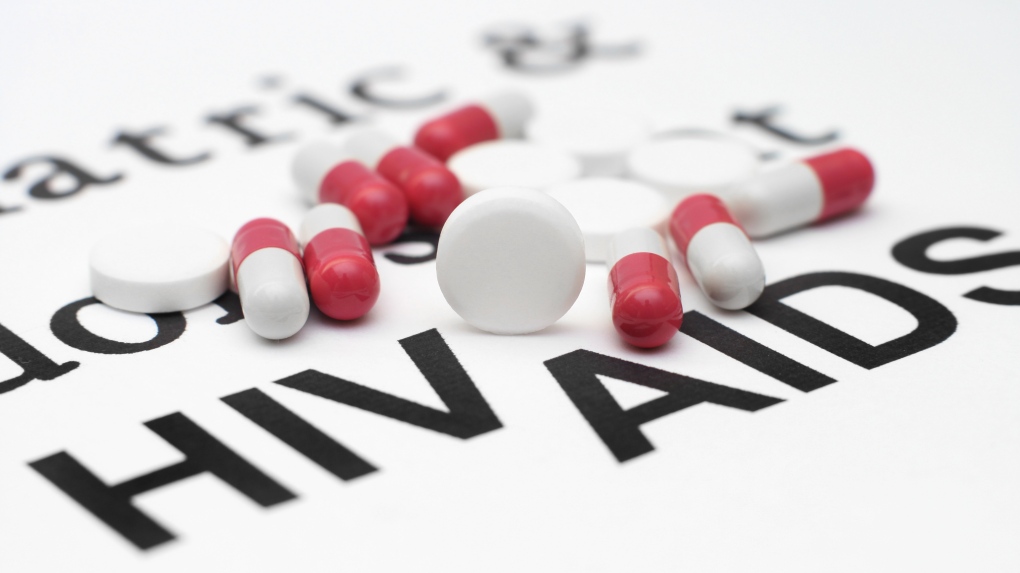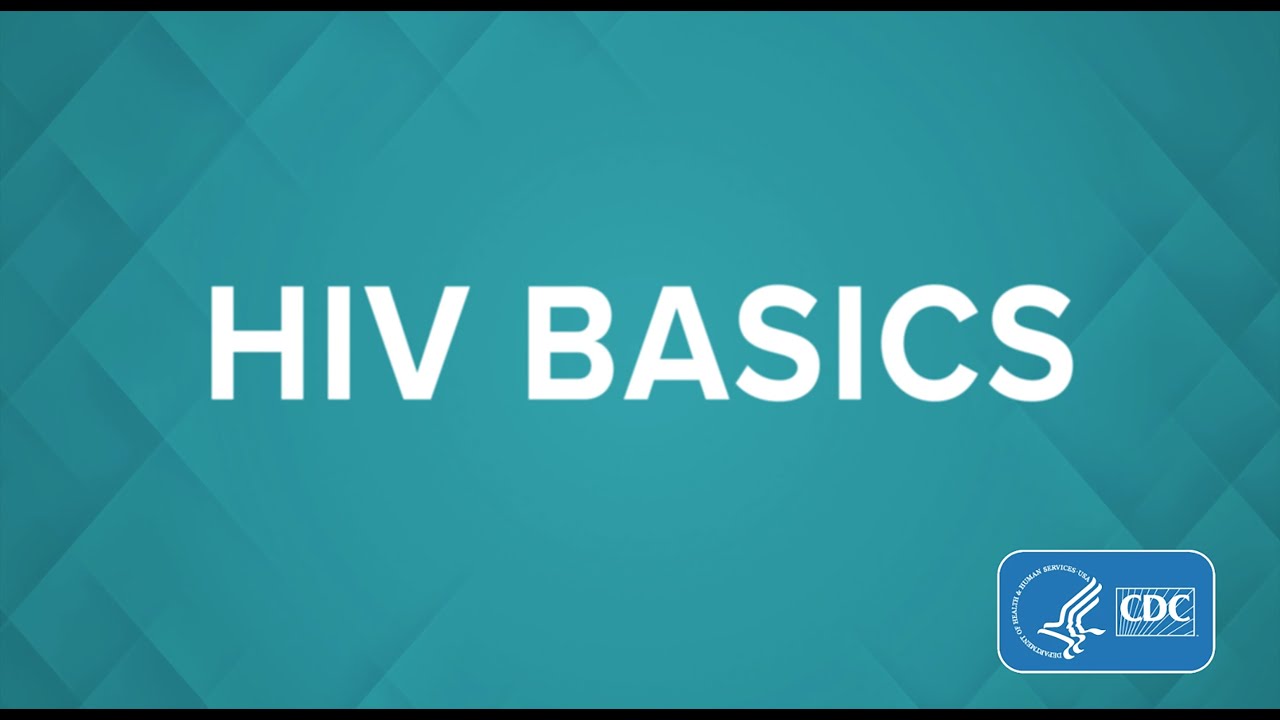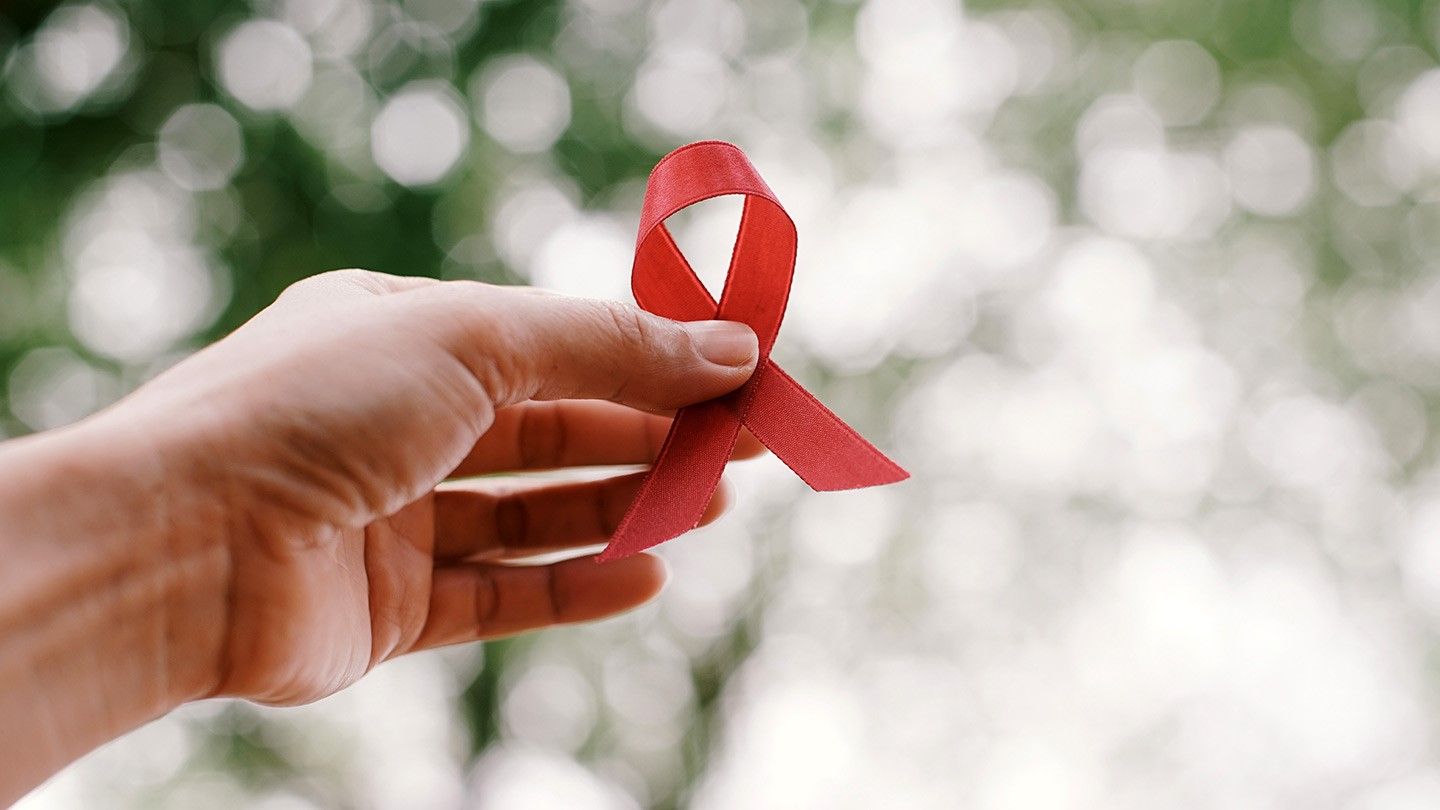Human Immunodeficiency Virus (HIV) Patients - Exploiting Physiopathology On Acute Coronary Syndrome
Since 1998, when Keith Henry reported two cases of myocardial infarction in human immunodeficiency virus (HIV) patients on protease inhibitors (PIs), multiple studies and databases have shown an increased risk of MI and endothelial dysfunction in HAART and PI patients. Only in the last decade have we learned about the underlying histopathology and cardiovascular impact of this condition.
Author:Suleman ShahReviewer:Han JuAug 13, 202236 Shares486 Views

Since 1998, when Keith Henry reported two cases of myocardial infarction in human immunodeficiency virus (HIV) patientson protease inhibitors (PIs), multiple studies and databases have shown an increased risk of MI and endothelial dysfunction in HAART and PI patients.
Only in the last decade have we learned about the underlying histopathology and cardiovascular impact of this condition.
HIV-infected patients receiving modern treatment live longer, but cardiovascular morbidity and mortality risk rises, as do chronic conditions related to the disease.
The same HIV-treatment drugs have been linked to insulin resistance and atherosclerosis due to dyslipidemia.
In a recent study, Guaraldi et al. found that age-related non-infectious comorbidities and polypathology were more common in HIV-infected patients than in the general population, and HIV-specific cofactors (lower nadir CD4 cell count and longer HAART exposure) were risk factors.
In this scenario, a complex interaction between traditional risk factors, comorbidities, anti-retroviral medications, and HIV's pro-inflammatory role emerges, representing a novel interplay in the infectious agent–host–environment model.
Traditional Cardiovascular Risk Factors In HIV Patients
Age, smoking, diabetes, and dyslipidemia increase the risk of coronary heart disease in HIV patients. Triant et al. conducted a large cohort study using a data registry with 3851 HIV vs. 1 044 589 non-HIV patients: acute myocardial infarction (AMI) was identified in 189 HIV and 26 142 non-HIV patients with AMI rates per 1000 person–years increased in HIV vs. non-HIV patients [11.13 (95% CI 9.58–12.68) vs. 6.98 (95% CI 6.89–7.06)].
The HIV cohort had significantly higher hypertension (21.2% vs. 15.9%), diabetes (11.5% vs. 6.6%), and dyslipidemia (23.3% vs. 17.6%) (P < 0.0001 for each comparison). Men with HIV smoked more often.
Even after adjusting for traditional risk factors, HIV infection increases atherosclerosis rates. Other studies of HIV-infected patients with ACS found they were younger, more often male, and smokers. Boccara et al. reported a mean age of first ACS in HIV-infected patients of 50 years, with tobacco smoking as the most prevalent coronary risk factor.

HIV: Transmission, Symptoms, Prevention, and Treatment | Merck Manual Consumer Version Quick Facts
HIV And Cardiovascular System - A Complex Interplay
HIV infection has been shown to increase the risk of coronary events, though the mechanism is not fully understood.
In the Kaiser Permanente database, HIV-positive and HIV-negative members had a higher hospitalization rate for coronary heart disease (6.5 vs. 3.8, P = 0.003) than myocardial infarction (4.3 vs. 2.9, P = 0.07).
Despite adjusting for age, gender, race, hypertension, diabetes, and dyslipidemia, HIV-positive patients had a higher risk of AMI than HIV-negative patients.
HIV-associated dyslipidemia, endothelial damage or dysfunction, inflammation, and hypercoagulability are possible causes.
Pathogenesis Of Coronary Artery Disease In HIV Infection
Dyslipidemia And Atherosclerosis
In the early stages of HIV infection, total cholesterol and high-density lipoprotein cholesterol levels are lower.
Progressively lower CD4 cell counts are associated with reduced clearance of low-density lipoprotein cholesterol (LDL-C) particles, lower levels of apolipoprotein B, and a decrease in high-density lipoprotein cholesterol; triglyceride levels may correlate to viraemia.
According to Mujawar et al., this mechanism derives from dysregulated intracellular lipid metabolism in HIV-infected macrophages due to impaired cholesterol efflux.
Histologically, HIV-related atherosclerosis has intermediate features between CAD and transplant vasculopathy.
Necropsy shows diffuse and circumferential vessel involvement with smooth muscle cell proliferation and abundant elastic fibers.
Some postmortem studies showed premature atherosclerosis in a high percentage of HIV-positive patients (including children) before PI therapy.
Inflammation
Both treated and untreated HIV patients have inflammation-related endothelial dysfunction.
Increased atherosclerosis with HIV can occur without ART, detectable viraemia, or overt immunodeficiency.
Hsue et al. compared carotid intima media thickness and C-reactive protein in HIV-positive and HIV-negative patients, reporting greater value in all HIV patient groups, regardless of viraemia or ART.
Furthermore, C-reactive protein levels remained elevated in HIV controllers. This suggests that inflammation may cause early atherosclerosis in these patients.
Hypercoagulability
HIV replication and immune activation may drive coagulation and fibrinolysis through tissue factor pathways.
Patients with untreated HIV infection and thrombocytopenia that worsens with HIV disease have a positive correlation.
Chronic platelet activation in HIV-positive patients may promote atherogenesis and increase thrombosis risk.
Anti-Retroviral Therapy - Treatment Or Poison?
Several studies found a statistically significant association between myocardial infarction and HAART in the last ten years.
This heterogeneitycame from study design (observational cohort studies vs. prospective randomized clinical trials), populations studied (age, cardiovascular risk factor, previous ART exposure), and outcome definitions.
Data Collection on Adverse Events of Anti-HIV Drugs follows over 20 000 patients for 94 to 469 persons per year.
Adjusting for hypertension, diabetes, and non-nucleoside reverse transcriptase (NNRT), the relative risk of myocardial infarction per year of PI exposure was 1.16 (1.10–1.23; CI 95%) and remained significant after adjusting for serum lipid level.

HIV Basics
Coronary Artery Disease
Several studies suggest HIV patients are at risk for premature CAD due to hyperlipidemia and insulin resistance from PI therapy.
Recently, we analyzed 11 studies with 2442 HIV-patients with ACS. STEMI was most common with multivessel involvement.
Both characteristics had a higher incidence than in contemporary ACS registries of non-HIV patients and combined could explain HIV patients' higher in-hospital event rates.
Other studies report a better in-hospital outcome without significant hemodynamic compromise.
In HIV-infected patients, PCI was associated with a high incidence of non-fatal reinfarction, restenosis, and in-stent thrombosis.
This feature was caused by cardiovascular risk factors and exacerbated by viral pathology and anti-retroviral side effects.
A high incidence of thrombo-embolic events and intraluminal fresh thrombus were linked to the prothrombotic state.
Management Of CVD In HIV
Modification Of Risk Factors
Early detection and treatment of co-morbidities and modifiable risk factors, such as smoking cessation, dietary changes, and exercise, may reduce cardiovascular risk in this population.
HIV infection and HAART treatment can increase the risk of plaque rupture and atherothrombosis, but routine secondary prevention ignores this.
According to some studies, HIV-infected patients rarely achieve LDL goals during follow-up.
Management Of Hyperlipidaemia
The Infectious Disease Society of America and Adult AIDS Clinical Trials Group developed guidelines for HAART-related hyperlipidemia.
These recommendations are based on NCEP Adult Treatment Panel III guidelines and advocate adjusting individual cholesterol levels based on Framingham predicted 10-year cardiovascular risk.
Treatment goals for hyperlipidemia are the same for HIV and non-HIV patients. In choosing a lipid-lowering therapy, consider drug–drug interactions in the patient population. All PIs inhibit CYP3A4.
Ritonavir inhibits it the most, followed by indinavir, nelfinavir, amprenavir, and saquinavir. Delavirdine, an NNRTI, inhibits CYP3A4.
Nevirapine and efavirenz induce the enzyme. So pravastatin (not metabolized by CYP3A4) and fluvastatin (metabolized by CYP2C9) are the first LDL-lowering agents.
Rosuvastatin concentrations increase when used with some NNRTIs (atazanavir, ritonavir, lopinavir), so 10 mg is the maximum safe dose. Lack of data prevents defining statins' anti-inflammatory effects.
During PI therapy, simvastatin and lovastatin are not recommended due to rhabdomyolysis risk.
Lack of data makes it impossible to define further benefits related to anti-inflammatory properties of statins.
Critical Appraisal Of The Validity Of Relevant Articles
Three unblinded independent reviewers (EC, FDA, GB-Z) abstracted relevant study data on pre-specified forms: authors, journal, year of publication, study group location, baseline features, and type and timing of anti-retroviral therapy.
To evaluate the overall quality of included studies, we abstracted and appraised study design, setting, data source, and bias risk (low, moderate, or high risk of bias, as well as incomplete reporting).
People Also Ask
Can HIV Cause Coronary Heart Disease?
Long-term HIV-infected men have a higher risk of developing plaque in their coronary arteries than uninfected men, regardless of other risk factors.
How Does HIV Cause CAD?
HIV+ people on ART, especially protease inhibitors, have high triglycerides and low HDL cholesterol.
Chronic inflammation and immune dysfunction accelerate HIV-related cholesterol plaque erosion and rupture.
Is HIV A Risk Factor For MI?
HIV-infected individuals have a significantly increased risk for cardiovascular complications, including acute myocardial infarction, heart failurewith reduced and preserved ejection fraction, sudden cardiac death, peripheral arterial disease, and stroke.
What Is Human Immunodeficiency Virus?
HIV, which stands for "human immunodeficiency virus," is a virus that causes damage to the cells that make up your immune system and reduces your body's capacity to fight off common illnesses and infections.
Conclusion
Specific anti-retrovirals prevent cardiovascular diseasein human immunodeficiency virus (HIV)patients, but long-term benefits need more data and longer-term follow-ups.
Ongoing trials will provide information on how to optimize HAART initiation timing. The START trial includes anti-retroviral-naive HIV-positive people with CD4 counts greater than 500 cells/mm3.
It's taking place at about 90 sites in nearly 30 countries, where participants are randomized to receive ART immediately or to defer treatment until their first CD4 count is less than 350 cells/mm3 or they have clinical signs of advanced HIV disease.
Such a randomized study will determine if the purported benefits of early therapy (as suggested by DHHS guidelines) outweigh the expected drug-associated side effects.
Other challenges and open issues include the best time to start ART, the best regimen in patients with established CAD, the role of anti-inflammatory and antithrombotic drugs, and the long-term clinical outcomes in HIV-positive patients, "doomed" in the modern era to live longer and face age-related morbidities.
Jump to
Traditional Cardiovascular Risk Factors In HIV Patients
HIV And Cardiovascular System - A Complex Interplay
Pathogenesis Of Coronary Artery Disease In HIV Infection
Anti-Retroviral Therapy - Treatment Or Poison?
Coronary Artery Disease
Management Of CVD In HIV
Critical Appraisal Of The Validity Of Relevant Articles
People Also Ask
Conclusion

Suleman Shah
Author
Suleman Shah is a researcher and freelance writer. As a researcher, he has worked with MNS University of Agriculture, Multan (Pakistan) and Texas A & M University (USA). He regularly writes science articles and blogs for science news website immersse.com and open access publishers OA Publishing London and Scientific Times. He loves to keep himself updated on scientific developments and convert these developments into everyday language to update the readers about the developments in the scientific era. His primary research focus is Plant sciences, and he contributed to this field by publishing his research in scientific journals and presenting his work at many Conferences.
Shah graduated from the University of Agriculture Faisalabad (Pakistan) and started his professional carrier with Jaffer Agro Services and later with the Agriculture Department of the Government of Pakistan. His research interest compelled and attracted him to proceed with his carrier in Plant sciences research. So, he started his Ph.D. in Soil Science at MNS University of Agriculture Multan (Pakistan). Later, he started working as a visiting scholar with Texas A&M University (USA).
Shah’s experience with big Open Excess publishers like Springers, Frontiers, MDPI, etc., testified to his belief in Open Access as a barrier-removing mechanism between researchers and the readers of their research. Shah believes that Open Access is revolutionizing the publication process and benefitting research in all fields.

Han Ju
Reviewer
Hello! I'm Han Ju, the heart behind World Wide Journals. My life is a unique tapestry woven from the threads of news, spirituality, and science, enriched by melodies from my guitar. Raised amidst tales of the ancient and the arcane, I developed a keen eye for the stories that truly matter. Through my work, I seek to bridge the seen with the unseen, marrying the rigor of science with the depth of spirituality.
Each article at World Wide Journals is a piece of this ongoing quest, blending analysis with personal reflection. Whether exploring quantum frontiers or strumming chords under the stars, my aim is to inspire and provoke thought, inviting you into a world where every discovery is a note in the grand symphony of existence.
Welcome aboard this journey of insight and exploration, where curiosity leads and music guides.
Latest Articles
Popular Articles
